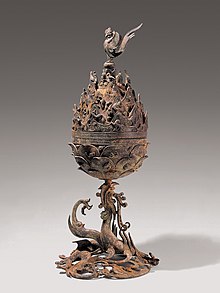This article needs additional citations for verification .(August 2018) |
| Buyeo National Museum | |
 | |
| Korean name | |
|---|---|
| Hangul | 국립부여박물관 |
| Hanja | 國立扶餘博物館 |
| Revised Romanization | Gungnip Buyeo bangmulgwan |
| McCune–Reischauer | Kungnip Puyŏpangmulgwan |
Buyeo National Museum is a national museum located in Buyeo,Chungcheongnam-do,South Korea. Since Buyeo was once the capital of the Baekje kingdom during the Sabi period (538-660),the Museum is fully devoted to the Baekje culture. [1]
